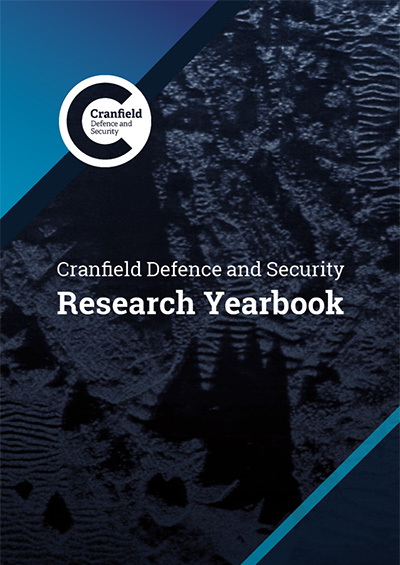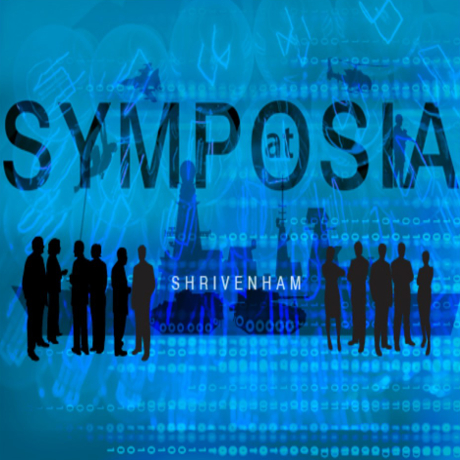Overview
- Start dateSeptember
- DurationTwo years
- DeliveryLectures, laboratory demonstrations and tutorials
- QualificationPgCert
- Study typePart-time
- CampusCranfield University at Shrivenham
Who is it for?
This PgCert has been designed for officers of the armed forces and for scientists and technical officers in government defence establishments and the defence industry.
Successful graduates of the PgCert will achieve a high level of understanding and detailed knowledge of military communications and sensor systems with particular regard to electronic warfare.
Why this course?
The main focus of the course, electronic warfare in relation to communications systems, assumes a good understanding of these systems before considering how to defend them from electronic attack or interception.
Course details
You must complete a taught phase consisting of five specified modules. The course is delivered via lectures, laboratory demonstrations and tutorials.
The teaching of the modules is reinforced by visits to relevant outside organisations which are scheduled outside of teaching periods.
Course delivery
Lectures, laboratory demonstrations and tutorials
Modules
Keeping our courses up-to-date and current requires constant innovation and change. The modules we offer reflect the needs of business and industry and the research interests of our staff and, as a result, may change or be withdrawn due to research developments, legislation changes or for a variety of other reasons. Changes may also be designed to improve the student learning experience or to respond to feedback from students, external examiners, accreditation bodies and industrial advisory panels.
To give you a taster, we have listed the compulsory and elective (where applicable) modules which are currently affiliated with this course. All modules are indicative only, and may be subject to change for your year of entry.
Course modules
Compulsory modules
All the modules in the following list need to be taken as part of this course.
Electromagnetic Propagation and Devices
| Aim |
To provide you with an understanding of electromagnetic propagation, antennas and devices relevant to military sensor, communications and electronic warfare systems. |
|---|---|
| Syllabus |
|
| Intended learning outcomes |
On successful completion of this module you will be able to:
|
Communications Electronic Warfare
| Module Leader |
|
|---|---|
| Aim |
To examine and understand the methods of electronically intercepting, contesting and protecting the information environment generated by communications systems. |
| Syllabus |
|
| Intended learning outcomes |
On successful completion of this module you will be able to:
|
Signal Processing, Statistics and Analysis
| Aim |
To provide you with an understanding of the subjects supporting the specialist modules and to provide you with the essential signal analysis and statistical tools used in the course. |
|---|---|
| Syllabus |
|
| Intended learning outcomes |
On successful completion of this module you will be able to:
|
MES-CP - Communications Principles
| Aim |
To provide you with an understanding of the concepts and techniques employed in modern communication systems. |
|---|---|
| Syllabus |
|
| Intended learning outcomes |
On successful completion of this module you will be able to:
|
Communications Systems
| Aim |
To provide the you with an understanding of how modern military and commercial communications systems utilise the principal techniques taught during the communications principles module. |
|---|---|
| Syllabus |
|
| Intended learning outcomes |
On successful completion of this module you will be able to:
|
Information Networks
| Aim |
To provide you with an understanding of networks in a modern military electronic sensor or communications system, their vulnerabilities and how they can be protected. |
|---|---|
| Syllabus |
|
| Intended learning outcomes |
On successful completion of this module you will be able to:
|
Teaching team
Your career
Successful graduates of this course should be fully equipped for roles in defence intelligence, systems development and acquisition, involving the specification and analysis of such systems, working individually or as part of a team either in the military or in the defence industry.
Cranfield Careers and Employability Service
Cranfield’s Career Service is dedicated to helping you meet your career aspirations. You will have access to career coaching and advice, CV development, interview practice, access to hundreds of available jobs via our Symplicity platform and opportunities to meet recruiting employers at our careers fairs. Our strong reputation and links with potential employers provide you with outstanding opportunities to secure interesting jobs and develop successful careers. Support continues after graduation and as a Cranfield alumnus, you have free life-long access to a range of career resources to help you continue your education and enhance your career.
How to apply
Click on the ‘Apply Now’ button to start your online application.
See our Application guide for information on our application process and entry requirements.










